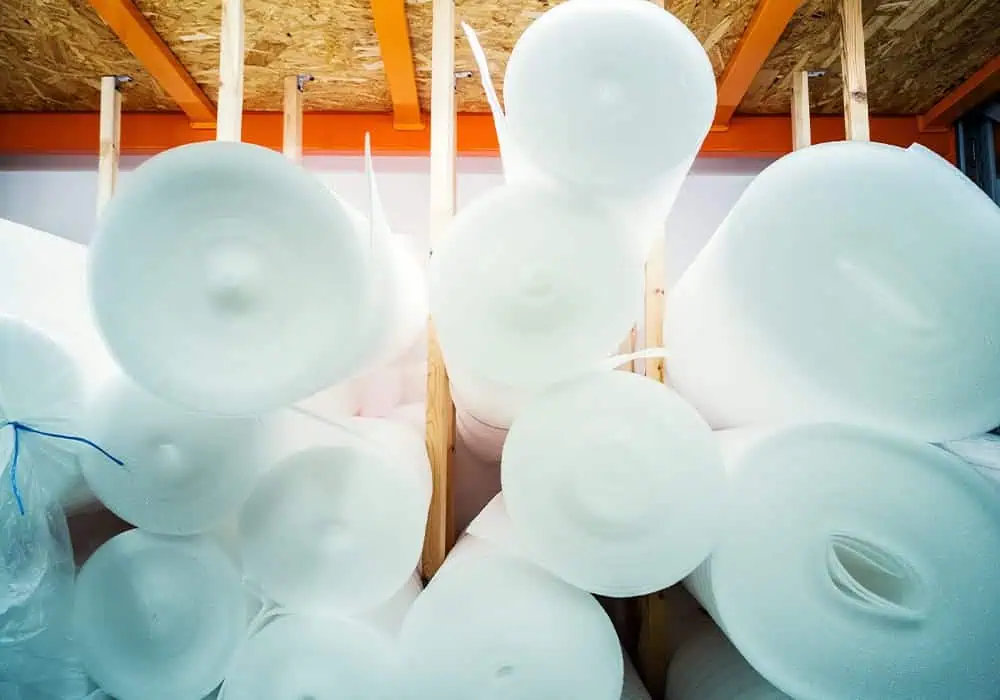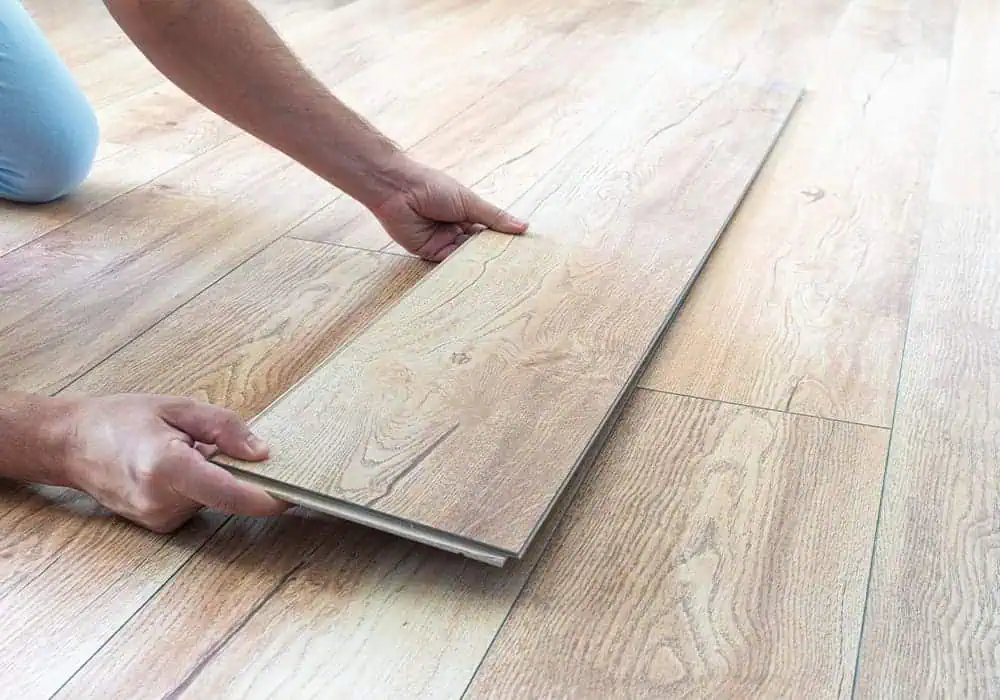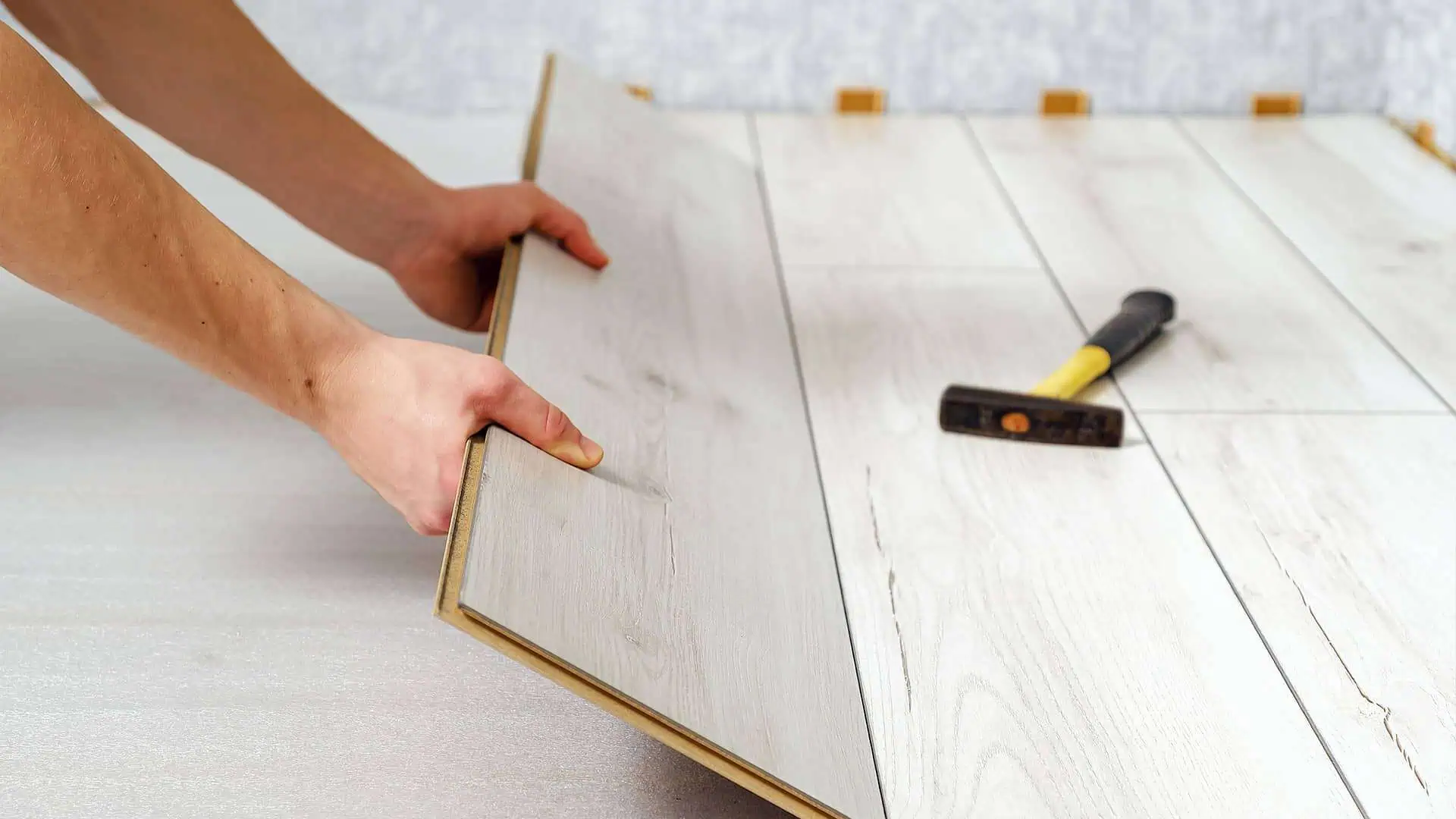Whenever you change your flooring, you need to be mindful of floor height. Going from a thick carpet and underlay to thinner laminate can lead to trip hazards between rooms and even issues with door clearance if you’re not careful.
Therefore, it’s important to consider how thick your laminate flooring and underlay will be. Here’s everything you need to know to make a confident purchase.
In this guide
Average thickness of laminate flooring with underlay
The average thickness of laminate flooring with underlay is around 12mm. This is based on a quality 4mm underlay and an 8mm laminate plank.
Laminate flooring can vary from 6mm to 15mm, while underlay thickness ranges from 1mm to 7mm. As you can see, there’s quite a lot of variance there, which means there is no definitive answer when it comes to combined thickness.
However, this also means thickness is in your control and can be adapted to every home. The exact thickness you go for will depend on several factors, including how much foot traffic the room sees, the type of subfloor it’s being laid on, and the level of comfort and sound insulation you require.
Here’s a handy guide to laminate and underlay thickness to help you make a more educated guess about finished floor height.
Laminate underlay thickness

Laminate underlay comes in different thicknesses to cater to various needs:
| TYPE | MEASUREMENT | KEY FEATURES |
|---|---|---|
| Thin | 1-2mm | 1-2mm underlay is typically a budget option that offers a basic layer of protection for your laminate. It will help smooth out any minor imperfections in the subfloor while slightly improving comfort and insulation. This type of underlay usually comes in the form of white foam. |
| Medium | 3-4mm | We consider this the sweet spot for laminate underlay, and where we focus most of our range. 3-4mm underlay is typically made using foil-backed foam or rubber – the latter being particularly durable and helping extend the lifespan of your flooring. Underlays in this range offer multiple benefits, including improved cushioning, sound reduction (Silentfloor Gold 4.2mm, for example, can reduce in-room noise by up to 30%), better insulation and in-built DPMs to negate moisture damage. And they do all this without raising your floor height too much. |
| Thick | 5mm+ | Any laminate underlay 5mm or thicker usually comes in two forms: foil-backed foam or fibreboard. Foil-backed underlay sees a layer of thick, cushioned foam backed with silver or gold foil. The foam creates an insulating barrier against thermal loss and noise, while the foil acts as a DPM to stop moisture ingress. These products are good for subfloors that have minor imperfections and/or moisture issues, as the underlay will help counteract both (within reason), as well as homes that are particularly busy and noisy. Fibreboard is a commonly used alternative to rolls of underlay. It comes in 5-7mm thick, rigid sheets that are slightly easier to lay than laminate underlay. The main advantage of fibreboard is that it’s more forgiving than foam or rubber underlay and will help rectify any minor issues in the subfloor, such as unevenness or cracking. Fibreboard is a good option for areas that get a lot of foot traffic. |
Laminate flooring thickness

Laminate flooring thickness varies wildly on today’s market, meaning there’s something for every home and budget:
| TYPE | MEASUREMENT | KEY FEATURES |
|---|---|---|
| Thin | 6-7mm | A budget-friendly option that’s suitable for low-traffic areas. It will feel thin and unforgiving underfoot and is less effective at masking subfloor imperfections. This type of laminate would benefit from a thicker underlay, but that probably defeats the point of opting for cheap laminate in the first place. |
| Medium | 8-10mm | The most common thickness on the market today. Medium laminate sits in the sweet spot between performance and budget. 8-10mm laminate offers a nice balance between cost, comfort and durability. When teamed with a 3-4mm underlay, you can be certain of a quality finish that will feel great underfoot. Suitable for all residential areas. |
| Thick | 11-12mm | 11-12mm underlay offers high sound and thermal insulation (due to increased thickness) and feels more like real wood. It will help level slightly uneven subfloors and is ideal for high-traffic areas and those areas of the home where you want a more luxurious feel underfoot. |
| Thickest | 12mm+ | There are laminate planks above 12mm thick on the market today, but at this level you’re only getting incremental gains for a much higher price point. All laminate is manufactured the same way (with a core layer, backing layer, decor layer and wear layer), so there comes a point where additional thickness doesn’t increase performance or durability. However, thicker laminate will definitely mask sound better, so if you live on the top floor of a particularly loud apartment block, this could be a consideration. In our opinion, you would be better off going for a slightly thinner plank and investing in a quality acoustic underlay instead. |
How thick should you go?
As you can see, the combined thickness of laminate flooring and underlay can vary greatly based on product choice and your specific needs.
While opting for thinner materials can help with height restrictions, it’s important to balance this with the need for durability, comfort and noise reduction.
If you’re unsure how thick your underlay should be, please get in touch with our expert team at contact@simplyunderlay.co.uk. We will be more than happy to help.

